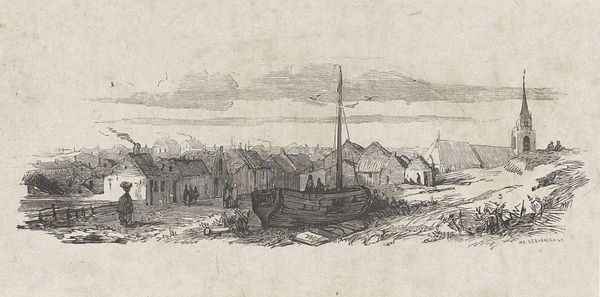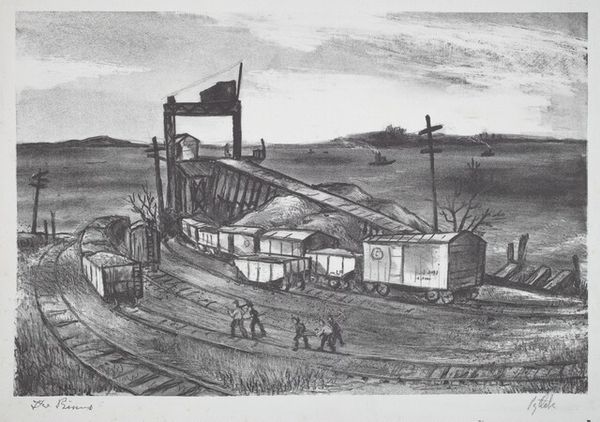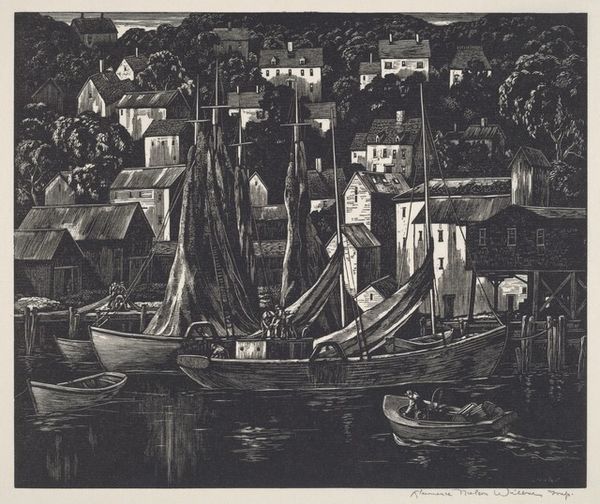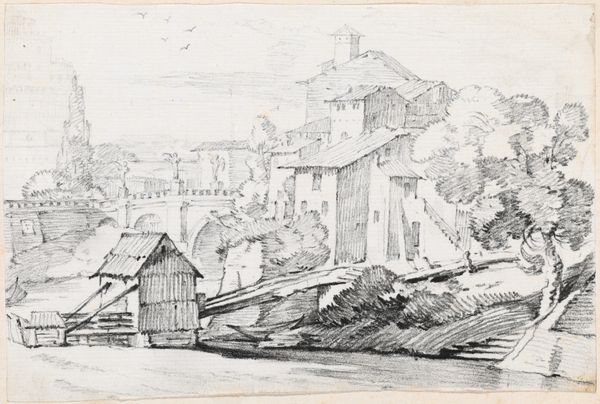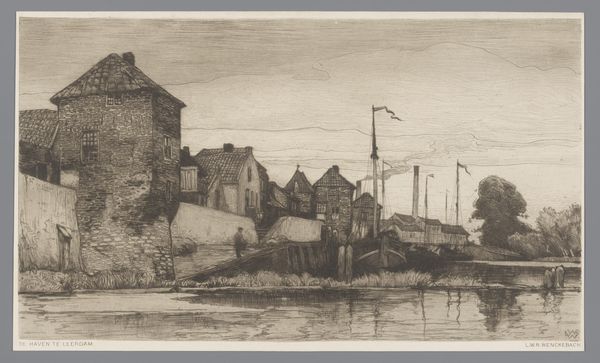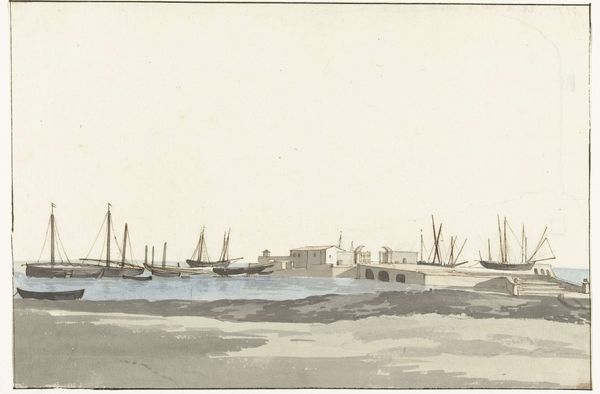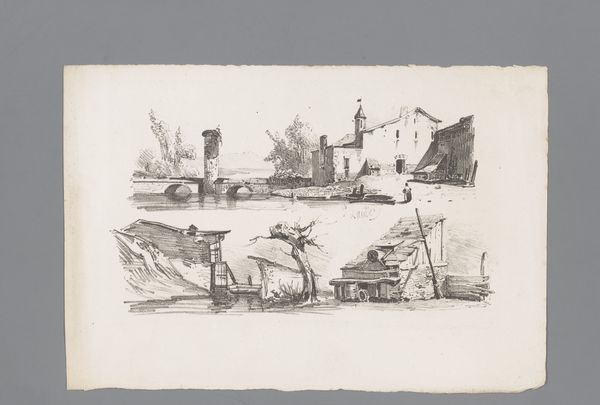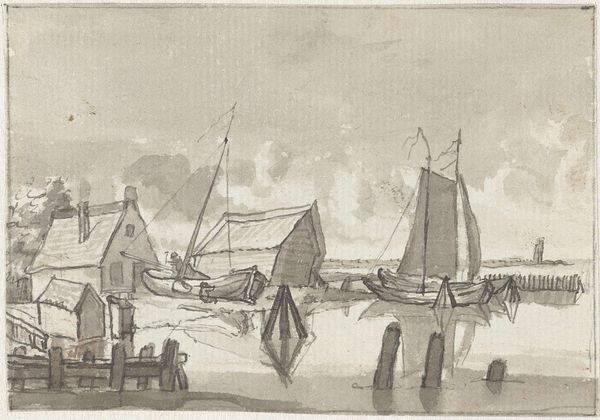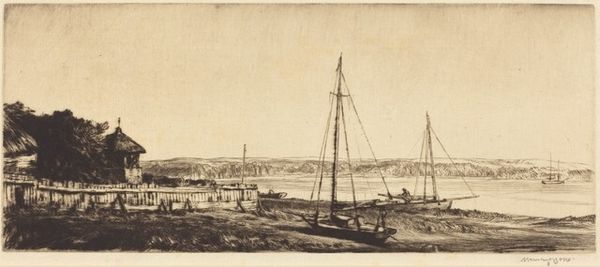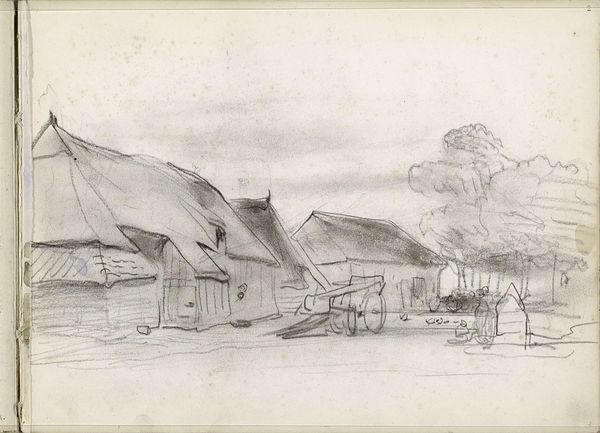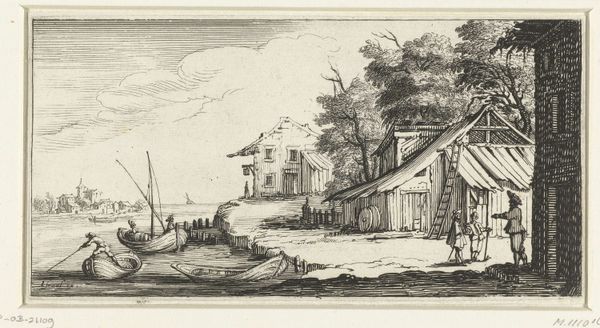
print, graphite
# print
#
landscape
#
graphite
#
cityscape
#
graphite
#
realism
Dimensions: Image: 195 x 278 mm Sheet: 233 x 304 mm
Copyright: National Gallery of Art: CC0 1.0
Curator: Immediately, I am struck by the textures! The varied marks of graphite across this print pull me in. What's your initial impression? Editor: It's sombre, certainly. There's an undeniable industrial feel to Edith Hogen Peck’s “Lumberyard - Mystic, Connecticut,” created around 1935. Look at the weight of those forms, the hulking sheds against the smaller, listing boats. Curator: Absolutely. And how those forms carry cultural weight, speaking to the labor, trade, and the everyday lives of the people living and working by the water. Water, as we know, a classic symbolic portal. Editor: Speaking of "trade", I'm focused on the lumber. See how its materiality contrasts so starkly with the ephemeral nature of the water it floats on? Consider how crucial this material would have been in the 30s, to building both structures and boats. Curator: Wood equals security and comfort. It also carries within it generations of memory of the forests. I note that in this realistic print, the sky above presses down— a reflection perhaps of both economic constraints, but maybe a sense of shared resolve in hard times. Editor: Right. This print uses the contrast of light and dark and textures achieved through graphite to really build up those tonal areas to give solidity and permanence to this little maritime industrial area. I'd love to know exactly which graphite sticks she was using... Curator: The water reflects everything—it contains memory. Water carries a psychic load! And this image presents that reflection clearly through its monochromatic tonality. The reflection suggests introspection and a desire to plumb the depths of what this scene represents. Editor: But I'm more interested in the actual labor it evokes! How were those boats made? What type of industry flourished in Mystic at that time? The image invites such important questions about production and consumption in America. Curator: Both readings enrich our understanding of the piece. For me, Peck has captured not only a realistic view of a lumberyard in Mystic, but also a shared psychological portrait. Editor: And, from my view, how she wielded her materials tells a story about America at work.
Comments
No comments
Be the first to comment and join the conversation on the ultimate creative platform.
